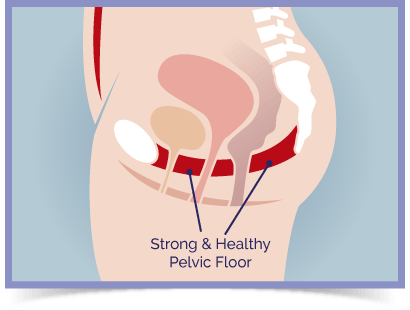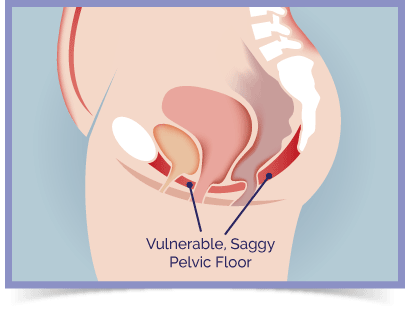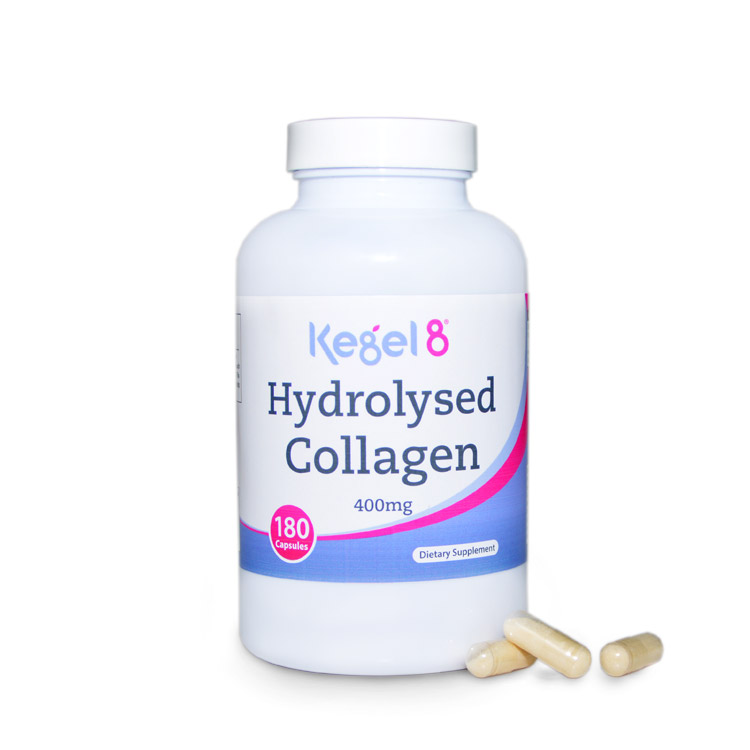The decline in oestrogen combined with natural ageing can cause pelvic floor disorders in postmenopausal women. These dysfunctions include incontinence, pelvic organ prolapse, and sexual problems.
What is the Treatment for Menopause?
The main treatment for women during menopause is Hormone Replacement Therapy (HRT). A woman can begin to take HRT to control menopausal symptoms. After a hysterectomy, a woman may only need oestrogen, with progestogen occasionally being added. This can be taken in a number of ways including tablets, patches and skin gels.
How Long Do You Take Hormone Replacement Therapy For?
For each woman, the length of time varies. It is recommended that women who suffer from unpleasant menopause symptoms should take HRT to improve their quality of life. HRT is recommended for young women until the average age of menopause (51). This will help to prevent early bone loss and other health issues.
Is Hormone Replacement Therapy Safe?
There is a link between HRT and blood clots or thrombosis, especially within 1 year of treatment. Women starting HRT more than 10 years after menopause can also have a slightly increased risk of cardiovascular disease.
Manual Pelvic Floor Exercises to Treat Menopause
When menopause occurs, your oestrogen production is significantly reduced, causing major urogenital atrophy. Urogenital atrophy involves the muscle mass within the vagina wasting away, as well as in the urinary tract. This hormone deficiency weakens the bladder and the urethra, causing them to become less able to control urinary functions. A reduction in oestrogen also affects the acidity of the vulva and the vagina, making it more prone to infection.
In order to maintain and improve your pelvic floor muscle strength it's vital that you exercise those muscles daily to keep it in shape. If you're wondering how to find your pelvic floor muscles, visit our page.
Kegel exercises involve contracting and relaxing your pelvic floor muscles. This helps to keep you in control of your bladder and bowel, as well as improving sexual function and overall health.
Increasing your pelvic floor strength can be achieved at any stage of menopause through pelvic floor muscle training; with women in the middle of menopause being the most responsive to exercises. To learn more about how to exercise your pelvic floor, click here.


Using an Electronic Pelvic Floor Toner to Treat Menopause

If you've never exercised your pelvic floor muscles before, you may find it hard to locate and exercise the muscles correctly. If you think that you don't feel any benefit from doing Kegel exercises, it could be that you're also exercising the muscles incorrectly, as 50% of women do. In these cases, the best option would be to use an electronic pelvic toner to increase the strength of your pelvic floor.
An electronic pelvic toner is able to stimulate 90% of your pelvic floor muscles, compared to the 40% stimulated by manual exercises alone. The Kegel8 Ultra 20 Electronic Pelvic Toner uses neuromuscular electrical stimulation and electrical nerve stimulation to send electrical impulses through the body and to the pelvic floor. These impulses stimulate a contraction within your pelvic floor, building your muscle strength and toning the area.
When Can't You Use An Electronic Pelvic Toner?
You must not use an electronic pelvic floor toner if:
- You are pregnant - You can use it before pregnancy to build your pelvic floor strength for pregnancy, and after to repair any pelvic floor damage.
- You have a pacemaker - It can be possible to use a Kegel8 electronic toner with specific pacemakers, but check with your healthcare provider first.
- You have a form of pelvic cancer - Unless advised to do so under medical supervision, you cannot use an electronic pelvic toner if you have a form of pelvic cancer. Instead, try the Kegel8 Vaginal Cones to help you work out your pelvic floor muscles correctly and efficiently.
- You have had recent pelvic surgery (less than 12 weeks ago).
- You have epilepsy.
- There is any infection or tissue damage.
Benefits of Strengthening Your Pelvic Floor During Menopause
Improving and maintaining the strength of your pelvic floor during menopause can help:
- Reduce or eliminate any embarrassing incontinence issues
- Reduce the risk of developing pelvic organ prolapse
- Gain confidence and reduce anxiety
- Improve sexual intimacy and orgasms
- Reduce back pain
- Avoid developing a pelvic floor disorder
How To Relieve Menopausal Symptoms
Strengthening your pelvic floor is a guaranteed method of relieving a variety of menopause symptoms. However, along the way you may need some help from the outside. Other things that you can do to help with your menopause process are:

- Supplement - A lot of vital vitamins are lost during the menopausal process, the main being collagen. This is the vital glue that holds the pelvic floor in place, but we lose it as we age. To keep your pelvic floor flexible and strong, supplement with collagen during menopause.
- Use lubricant - The loss of the hormone, oestrogen, can result in vaginal dryness as the lining of the vagina produces less mucus. The urethra also undergoes a similar process. This dryness can not only put you at a higher risk of developing a urinary tract infection, but it can also make sexual intercourse unpleasant and sometimes painful. This can decrease your sexual drive and activity. Using lubricant can help to increase the fun and pleasure of sex during menopause.
- Invest in some support shorts - As we age, the bladder becomes less elastic and has more difficulty stretching. As it fills with urine, this loss of stretch can irritate the bladder muscles and cause it to become overactive. This bladder weakness can cause a variety of incontinence issues to you during menopause. Support shorts can help to prevent leaks and stress incontinence during exercise by supporting your pelvic floor.
- Use oestrogen cream - Your GP may prescribe you with oestrogen cream if you suffer from vaginal dryness. For some menopausal women, the cream can be more effective than lubricants and moisturisers, but it can cause some side effects. Vaginal oestrogen is also available as pessaries and vaginal rings.
- Maintain a healthy weight - An increased weight can put more pressure on your pelvic floor, which can make menopausal symptoms, such as incontinence, even worse.
Sources
Continence Foundation of Australia (2018) Menopause [online]. Continence Foundation of Australia [viewed 04/09/2018]. Available from https://www.continence.org.au/pages/menopause.html
NHS (2016) Vaginal Dryness [online]. NHS [viewed 04/09/2018]. Available from https://www.nhs.uk/conditions/vaginal-dryness/
Oxford University Hospitals (2011) The Menopause and Hysterectomy . NHS Trust
Tosun, Ö.Ç., Mutlu, E.K., Tosun, G., Ergenoğlu, A.M., Yeniel, A.Ö., Malkoç, M., Aşkar, N., İtil, İ.M. (2015) Do Stages of Menopause Affect the Outcomes of Pelvic Floor Muscle Training?. Menopause: The Journal of The North American Menopause Society. 22(2), pp. 175-184.
Urogynecology: University of Colorado (2018). Menopause & Prolapse [online]. University of Colorado Urogynecology [viewed 04/09/2018]. Available from https://urogyn.coloradowomenshealth.com/patients/library/menopause-prolapse
Urogynecology: University of Colorado (2018). Menopause & Urinary Symptoms [online]. University of Colorado Urogynecology [viewed 04/09/2018]. Available from https://urogyn.coloradowomenshealth.com/patients/library/menopause-urinary-symptoms



